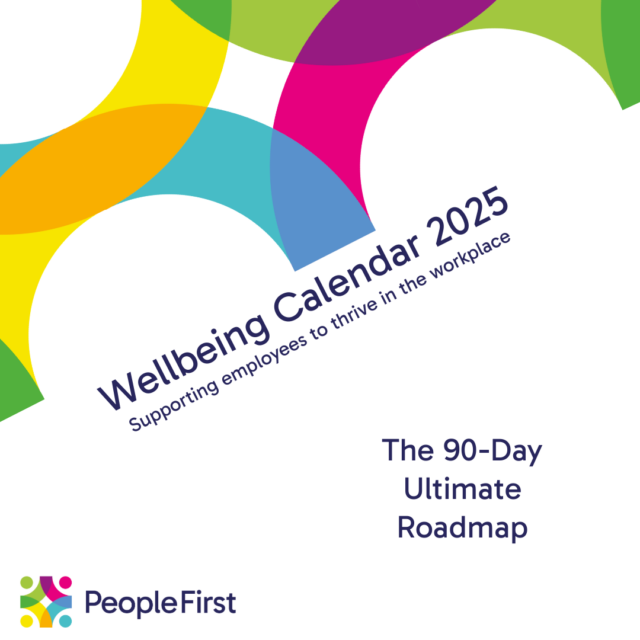
04 November 2024
Teacher Time Management
In our previous blog, we discussed how excessive workload can undermine teacher wellbeing, contributing to burnout and stress. Another key factor closely tied to workload is time management, or rather, the lack of it. Poor time management exacerbates the challenges educators face, often making it impossible to achieve a healthy work-life balance. Without this balance, even the most dedicated teachers and school leaders can find themselves overwhelmed, exhausted, and at risk of burnout. In this blog, we’ll explore how teacher time management and work-life balance impact staff wellbeing and provide practical strategies for reclaiming time. While these steps can provide short-term relief, partnering with an educational wellbeing specialist ensures lasting change, offering schools access to a wealth of personalised strategies.
The Struggle to Achieve Work-Life Balance
The concept of work-life balance is something that most educators aspire to but rarely achieve. With long working hours, administrative duties, extracurricular activities, and lesson planning, many teachers find themselves bringing work home, blurring the lines between their personal and professional lives.
According to the Teacher Index 2023, a significant proportion of educators report regularly working beyond contracted hours, leaving little time for rest, family, or hobbies. This lack of downtime can lead to:
- Chronic Fatigue – Teachers who don’t take adequate breaks or have personal time are more prone to exhaustion, affecting both their wellbeing and their teaching performance.
- Stress and Anxiety – A constant feeling of not having enough time creates an overwhelming sense of pressure, leading to stress and increased anxiety.
- Reduced Job Satisfaction – Without balance, many teachers lose their passion for teaching, leading to disengagement and lower job satisfaction.
Addressing time management and restoring work-life balance is essential for educators to recharge and maintain their mental health.
Strategy 1: Set Boundaries Between Work and Personal Life
One of the most effective ways to improve work-life balance is by setting clear boundaries. This can be difficult in education, where the demands often feel endless, but without boundaries, staff risk burning out. Leaders can help by supporting the creation of a culture that respects personal time.
Actionable Steps:
- Encourage Work Hours Boundaries – Promote a culture where staff feel empowered to leave work at work. Encourage teachers to set boundaries around their working hours and avoid taking marking or planning home.
- Designate ‘Non-Work’ Time – Encourage staff to block out time in their schedules that is dedicated to personal activities or relaxation, helping to ensure they can recharge.
While setting boundaries is important, these efforts are more effective when implemented with the support of a wellbeing programme that promotes a healthy work-life balance across the school.
Strategy 2: Use Time Management Tools
Time management tools can help staff organise their workload more effectively, ensuring tasks are completed efficiently and leaving time for personal wellbeing. Schools can encourage staff to adopt time management systems that help them track their priorities and focus on the most important tasks.
Actionable Steps:
- Adopt Prioritisation Techniques – Encourage teachers to use techniques such as the Eisenhower Matrix to categorise tasks based on urgency and importance, helping them focus on high-priority work.
- Time Blocking – Promote the use of time blocking techniques, where staff allocate specific periods of their day to focus on particular tasks, such as lesson planning or marking, ensuring key tasks are completed within school hours.
Our tailored support services offer schools access to time management coaching, helping staff implement strategies that align with the unique demands of their roles. By working with an educational wellbeing specialist, schools can ensure that time management systems are both practical and sustainable.
Lessons from My Leadership Journey
One of the biggest challenges I saw among staff was the struggle to prioritise their time effectively. Many teachers were so focused on getting through their to-do lists that they neglected their own wellbeing. I remember a conversation with a teacher who was working late every night, trying to keep up with marking and lesson planning. It became clear to me that we needed to help staff set boundaries and manage their time better, so they could balance their professional and personal lives.
Why Partner with People First?
While the strategies above provide a strong foundation for improving time management and work-life balance, sustainable change requires ongoing support. At People First, we specialise in creating bespoke educational solutions that help schools embed time management practices that work for their staff.
When schools partner with us, they gain access to:
- Personalised Time Management Plans – We work closely with school staff to develop tailored time management systems that reflect the specific demands of their workload.
- Work-Life Balance Coaching – Our educational experts offer coaching sessions that empower staff to regain control of their time and prioritise their wellbeing.
- Long-Term Wellbeing Solutions – Effective time management is just one aspect of creating a balanced work environment. Our holistic approach ensures schools build a sustainable culture that supports both the professional and personal lives of staff.
Teacher Time Management – Creating Balance
Improving teacher time management and creating a healthy work-life balance is crucial for maintaining the wellbeing of teachers and school leaders. While individual strategies such as boundary setting and time management tools can help, the support of an educational wellbeing specialist ensures these practices are implemented effectively across the school. At People First, our tailored solutions empower educators to take control of their time, enabling them to perform at their best without sacrificing their wellbeing.
Stay tuned for our next blog, where we explore stress and anxiety management for educators, offering actionable strategies to help staff build resilience in a high-pressure environment.
If you’re ready to explore how our Work and Wellbeing Programmes can help your school, reach out to us. Together, we can create a balanced, thriving educational environment where staff are supported to succeed.
Other blog articles that maybe of interest




